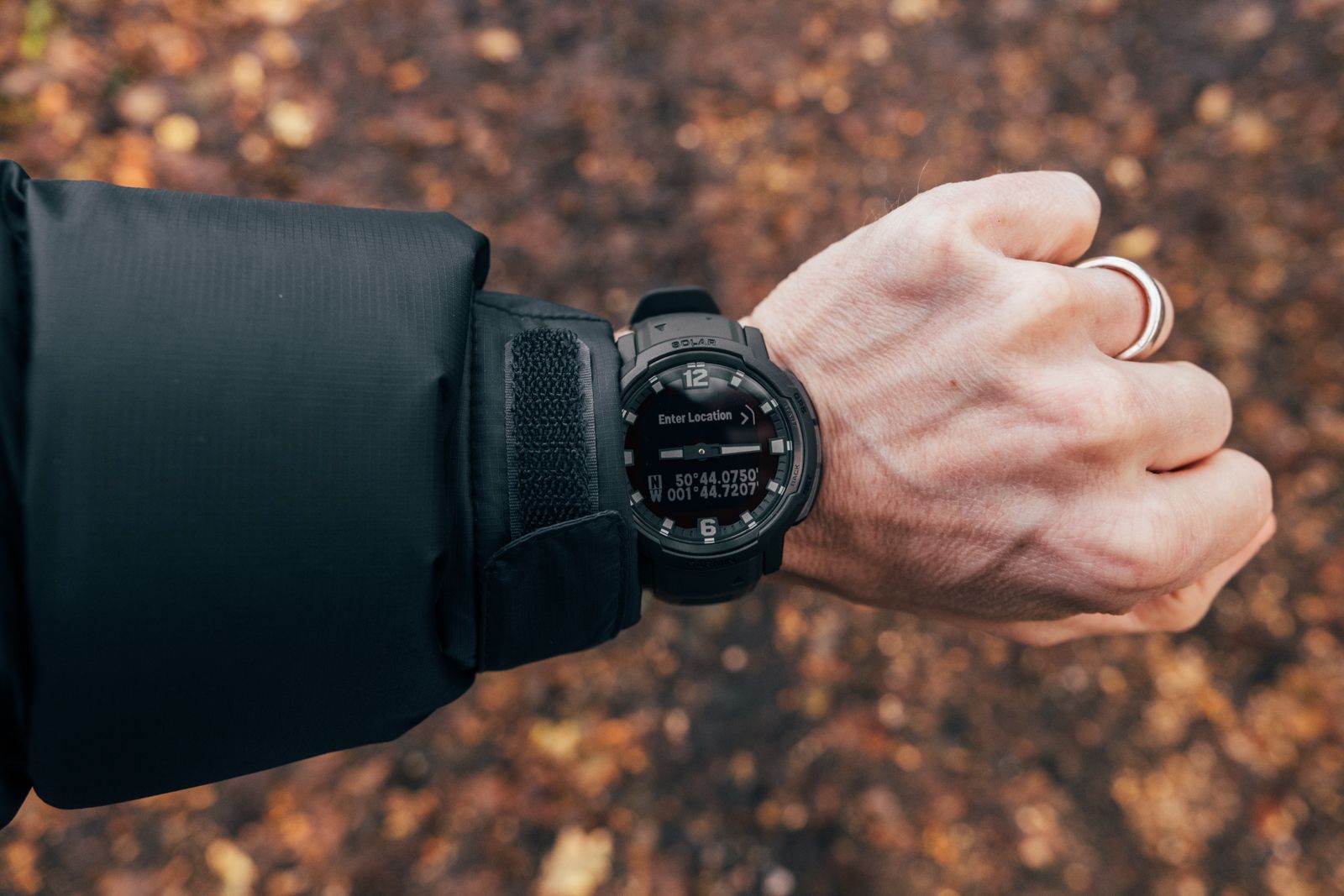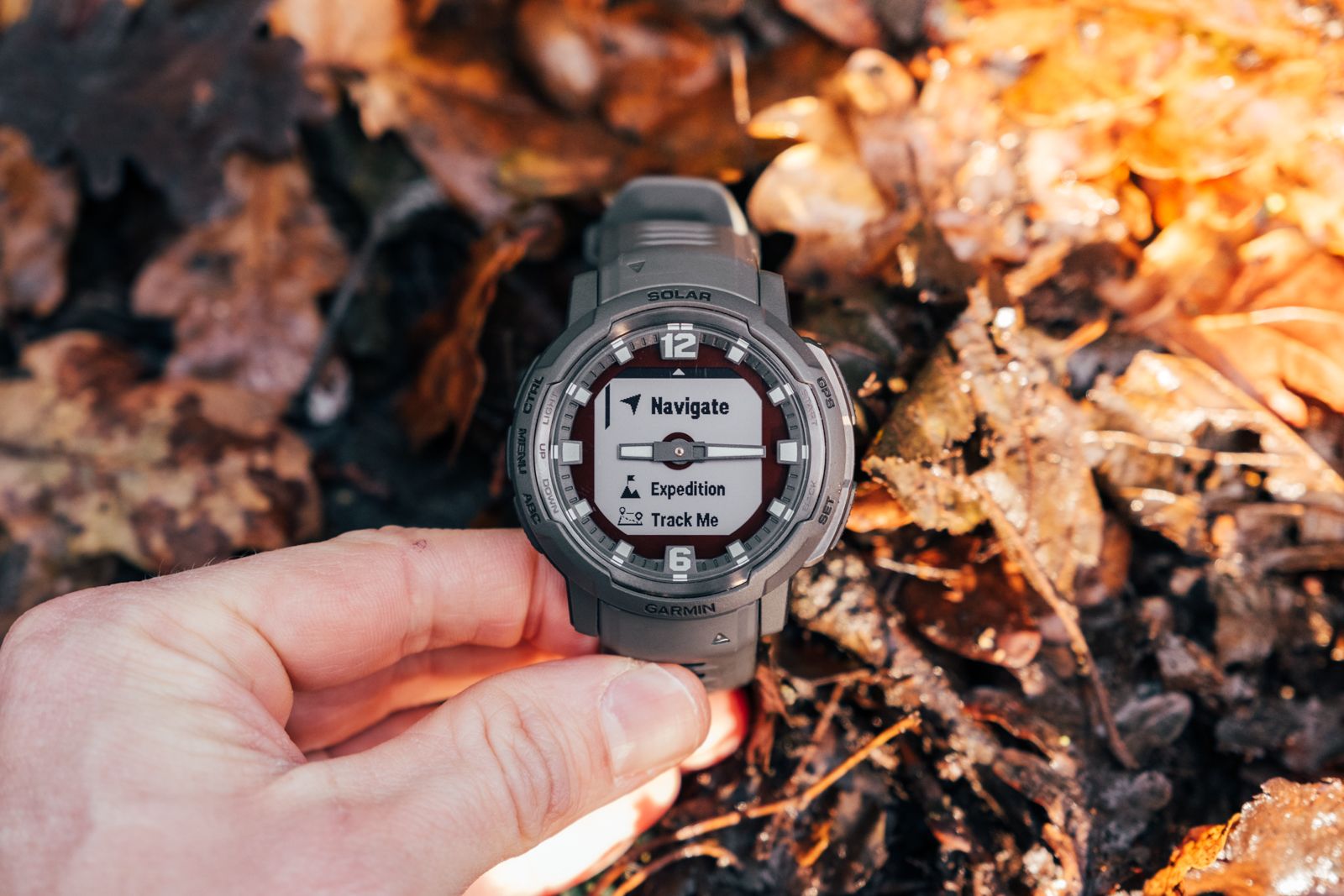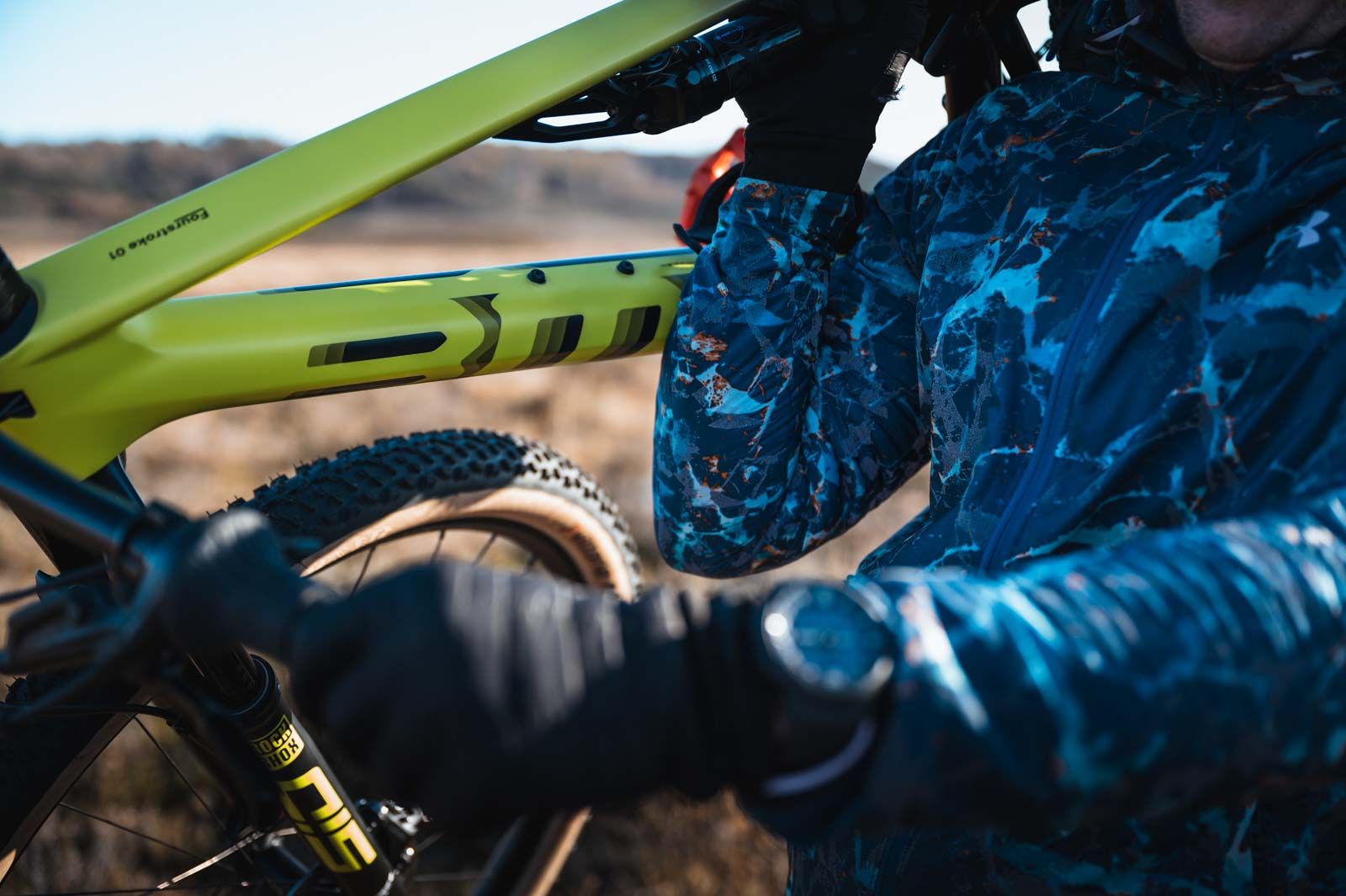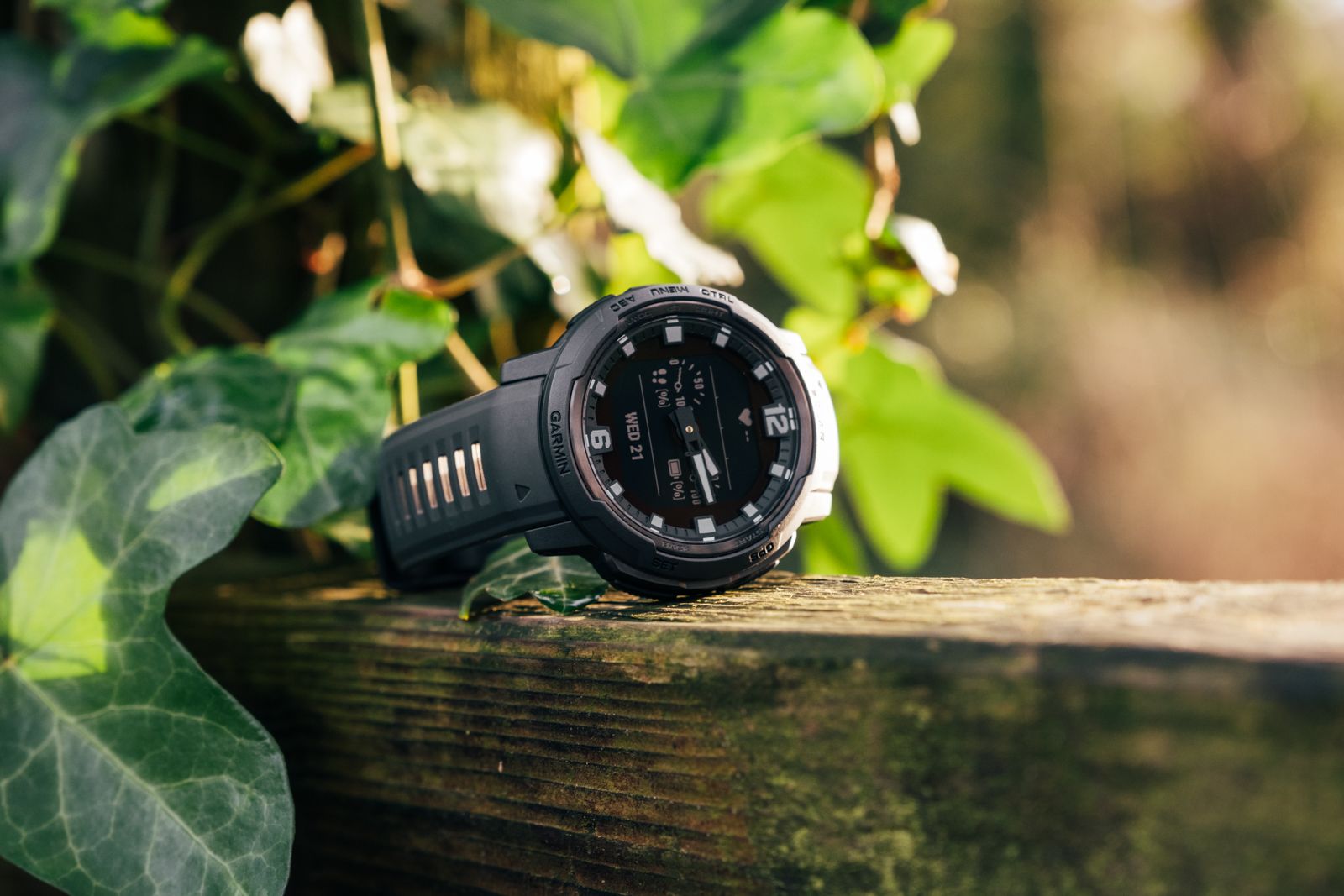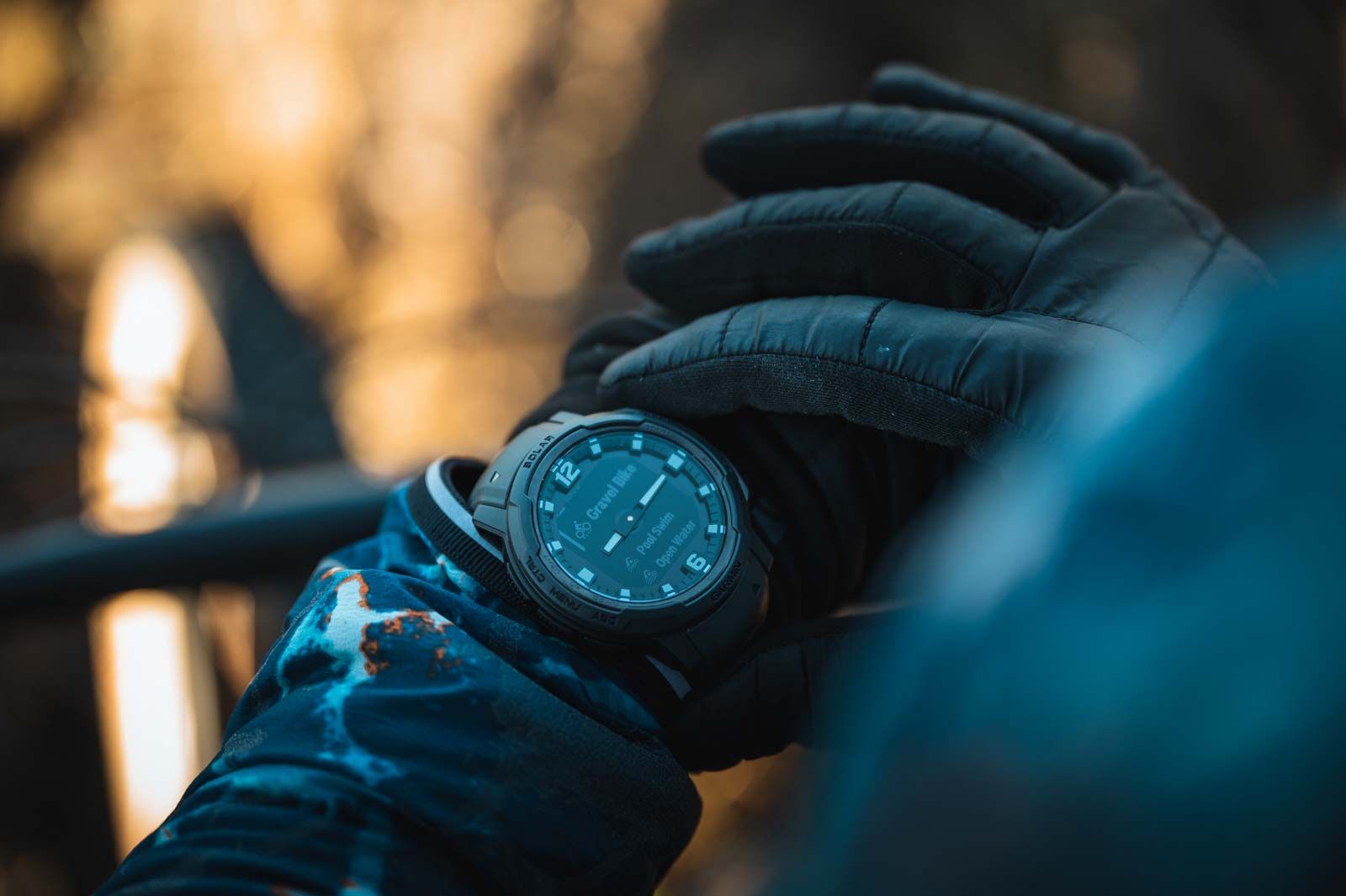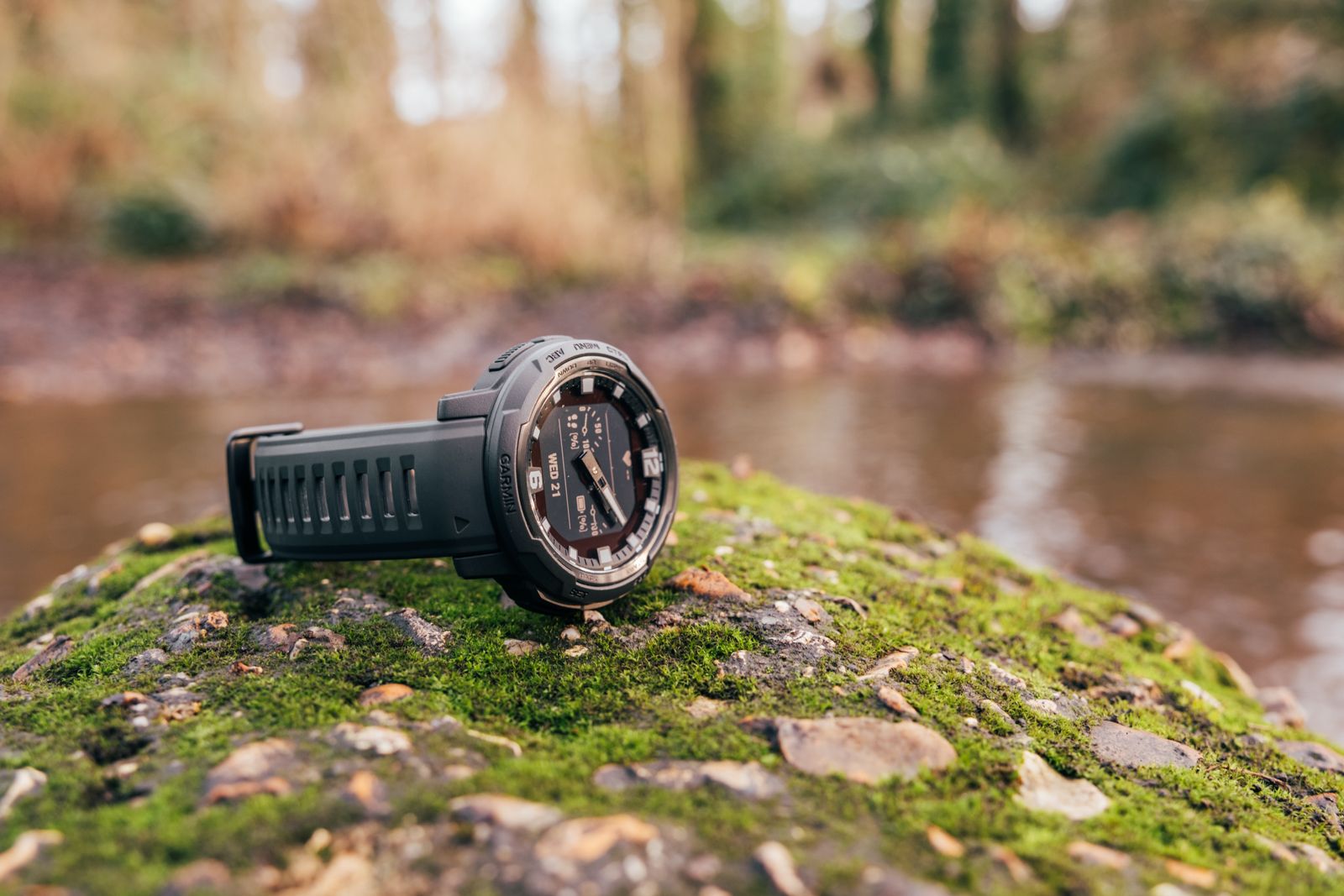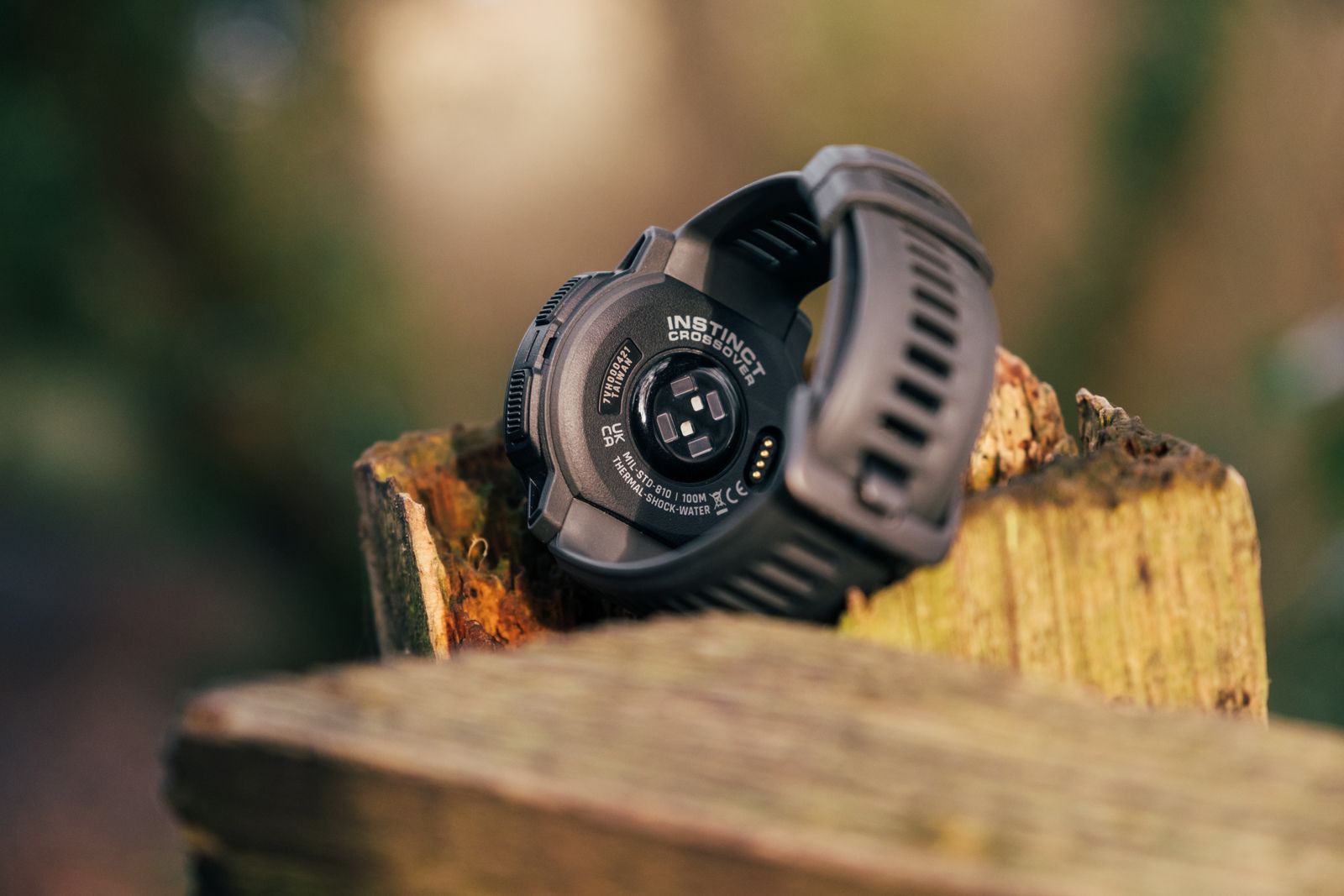If you are in the market for a tough, outdoors GPS smartwatch, now is arguably one of the best times to get your shop on, and the Garmin Instinct Crossover Solar is another to add to your growing list.
I’d fully expect names like Suunto and Polar to also feature, as they now offer powerful timepieces that look great and pack the tech chops to get you out of a wilderness bind.
What’s more, tech giant Apple has even stepped into the fray, recently updating its sensational Apple Watch Ultra 2, so now smartwatch lovers don’t have to compromise on features when diving to the depths of the ocean or scaling the world’s tallest peaks.
So where does that leave Garmin? Arguably the first name most think of when asked to name a durable outdoors smartwatch, the now company has the deepest line up of sports-specific devices and adventure-ready wearables in its recent history.
From the AMOLED screen Epix to the all-conquering Fenix, Garmin has most bases covered. Well, at least I thought so until the Instinct Crossover came along. A niche within a niche – an Inception of niches, if you will, the watch features much of the activity tracking you’ve come to expect of a Garmin, but with a set of rather handsome hands.
Is this necessarily a good thing, or just plain weird? I strapped one to my wrist for a few weeks to find out.
Garmin/ Pocket-lint
Garmin Instinct Crossover Solar
$351.2 $449.99 Save $98.79
The Garmin Instinct Crossover is another addition to a long list of excellent Garmin smartwatches. But said list is growing at a rapid rate, potentially making the range now very tricky to navigate for new customers. It’s as good as the Instinct 2, upon which it is based, but offers analogue hands. Whether you want that or not will be purely down to personal tastes.
- Subtle looks
- As robust as they come
- Superb battery life
- Navigating menus is fiddly
- Information not easy to see
- Luminescence not what it is cracked up to be
Design
- Monochrome, sunlight-visible, transflective memory-in-pixel (MIP) display
- Luminescent analogue hands
- Ultra-rugged plastic exterior
Anyone who has spent time with the Garmin Instinct 2 will recognise the shared features here. There’s a familiar fibre-reinforced polymer casing that feels robust but comes across as very plastic-y. Although, you’ll have trouble scratching it up.
Leon Poultney/ Pocket-lint
The display is slightly different though, as the small circular section found on the Instinct 2 has gone and this instead uses a full screen approach – albeit one obscured by analogue hands. Yup, old school mechanical hands like you find on a real watch. Remember those?
But fear not, as said hands are very clever, able to swing out the way when you wish to view various data fields. Select one of the workouts, for example, and the two hands form a horizontal line, so the screen can be viewed without obstruction. Pretty cool.
Cooler still is the way these two hands become a gauge when viewing a heart rate monitor, or when looking at daily step count, for example. Garmin dubs its technology RevoDrive, which makes no sense to me, but essentially self-calibrates to keep accurate time after the hands swing out of the way.
Leon Poultney/ Pocket-lint
Apparently, the tech will automatically re-adjust the hands in the case of a major shock, such as a big bike crash. It will detect a shunt and rapidly recalibrate the hands. Because, you know, accurate timekeeping is important when you’ve potentially broken bones.
On top of this, the hands are covered in what Garmin refers to as Super-Luminova luminescent paint, which glows in low light conditions. During testing, I found this is really nothing to shout about, as there are plenty of cheap analogue watches that glow much brighter in the dark.
It is available in a number of subdued colours, from all black to grey and a dark blue. There is also a Tactical edition, which is more expensive and features solar charging tech for a theoretically unlimited battery life and handful of other military features.
A standard Solar version is also available, without the Super Army Soldiers stuff, while Garmin also offers a number of straps that can be easily fitted if you wish to personalise it. That said, it’s not a handsome watch and even with some fancy straps, looks more like a Casio that it does one of Garmin’s other units, such as the Fenix, Epix or, if you’ve got the cash, Marq models.
Leon Poultney/ Pocket-lint
Display and software
- Display size: 23 x 23 mm
- Display resolution: 176 x 176 pixels
- Type: Monochrome, sunlight-visible, transflective memory-in-pixel (MIP)
Despite the analogue hands, the watch runs on the same operating system as the Instinct 2 and pairs with the Garmin Connect smartphone app. With that in mind, it can essentially do much of the same stuff as anything in the Garmin outdoor GPS smartwatch stable, although the display will limit that to an extent.
It is not possible to follow beautiful, full-colour maps like it is on Epix, Fenix and Marq models,nstead it offers a sort of breadcrumb trail approach where you follow turn-by-turn directions to get you back where you need to be. These instructions then appear in the background, with the analogue hands swinging out of the way, so you can see the data that matters.
Leon Poultney/ Pocket-lint
Similarly, when working out, the screen splits into three segments and you are able to see the most important data from your run (fully customisable, of course). Scrolling between data screens requires a press of the stubby button, which I prefer over swiping, especially when on the move.
Activity tracking
- 64MB internal memory
- 9 built-in sensors
- 10 ATM water rating
Anyone familiar with the latest Garmin range will know that these devices track pretty much every activity you can think of, including really obscure stuff, like Disc Golf (golf with a Frisbee, anyone?), hunting and even snowshoeing.
A recent update introduced wrist-based running power, which is a cinch for keen runners, while the Instinct Crossover 2 will happily sync with power meters, heart rate monitors and other devices via Bluetooth and/or Ant+.
There’s also the latest version of wrist-based heart rate monitoring, which is constantly reading heart rate information throughout the night and day, and the tiny variations in the heart beat to measure overall health, fatigue and other factors that influence a training regime.
Leon Poultney/ Pocket-lint
Also worth noting is that Garmin has opted for a new GPS chipset, which is supposedly more accurate and faster to locate satellites. Although it doesn’t have the dual-frequency tech that’s found in the multi-band Fenix 7, range-topping Marq models and the excellent Apple Watch Ultra 2, which we found to be extremely accurate.
That said, the GPS tracking was excellent in the sports modes I tested out. Long road runs, trail running sessions and outdoor cycling activities were all tracked accurately and granular information can be sifted through either on the watch itself or via the Connect app on a smartphone following a sync.
As I previously mentioned, despite the lack of screen real estate, it’s also possible to cycle through plenty of data screens during the activity, with the aforementioned heart rate status proving really intuitive to use.
The hands literally point towards the “zone” you are currently in, making it simple to adjust effort according to your training goals.
Leon Poultney/ Pocket-lint
Although it is worth noting that the screen, complete with analogue hands, does feel quite busy at times. Even though the hands do a good job of getting out the way, some of the data can be difficult to visualise quickly when on the move because it’s so small.
Performance in the wilderness
- Weighs 65g
- Lacks built-in music
- Garmin pay as standard
- Galileo, GPS and GLONASS
I will admit that it takes a bit of time to get used to the Garmin Instinct Crossover. It doesn’t make as much sense as the Instinct 2, which is essentially a watered down version of the colourful Fenix 7, Epic and Marq models, packing lots of the same advanced tracking features without the battery-sapping colour touchscreen and fancy mapping.
As I said earlier, the Crossover is a niche within a niche. Adding hands to it is purely a stylistic decision, but I have to admit it looks pretty neat. Hold it up next to an Instinct 2 and it definitely looks like a more premium product. I like wearing it most days, because it blends into the background. It also doesn’t scream “mug me” like a massive Apple Watch Ultra does.
Leon Poultney/ Pocket-lint
Out in the wild, it performs admirably, boasting all the same excellent features that I enjoyed when testing the Instinct 2. While there is no mapping, the breadcrumb trail system works very well, with turn-by-turn directions ensuring you don’t get lost. You can switch this on at the beginning of a hike or trail run and then follow the directions back, should you lose your way.
It’s also possible to navigate by sight, essentially turning the watch into a digital compass, or you can punch in coordinates, load up a redetermined route (plan that in the app) and work with routes from third party apps, such as Komoot or even Strava.
As I previously mentioned, I found the small screen to be quite tricky to read sometimes, often requiring a press of a few buttons to cycle to the appropriate data screen. Compare this to a Fenix or Marq, where all the info is beautifully presented on a pin-sharp colour screen, and it feels a bit poor, but then this is a much cheaper proposition.
Leon Poultney/ Pocket-lint
However, less impressive are the luminescent analogue hands, which I found rarely really drew enough charge from UV rays to be of much use. Apparently, it’s possible to charge them up with a blast of an iPhone torch or other bright light source, but the low light visibility is among some of the worst I’ve seen in a Garmin watch. The backlight is measly, too.
I own several analogue watches with similar technology that manage to shine brightly throughout much of the night, but the Garmin Instinct Crossover would never really reach full output and would then die off almost instantly.
It’s not a huge issue, but I found I had to set the watch face up with a digital time data field and then light up the display to tell the time at night, or even when walking in dense woodland.
Battery life
- Battery life: Smartwatch mode up to 28 days/70 days with solar
- Charging via Garmin proprietary plug charger
- Expedition GPS Activity: Up to 40 days/327 days with solar
The battery life is astounding in the Solar model I tested, and I found I only had to charge the watch once every few weeks – even with relatively heavy usage.
A typical week would involve several gym-based workouts, a quick 5K run with GPS mode-enabled and then a much longer bike ride with the watch doing most of the tracking. Even still, the Instinct Crossover lasts an incredibly long time.
Leon Poultney/ Pocket-lint
It is entirely possible to run the watch for 327 days in an Expedition mode with occasional GPS activity, assuming it is used in 50,000 lux conditions daily. That’s the equivalent of an overcast day. Let that figure sink in: 327 days. It’s just nuts.
Verdict
There’s a lot to love about the Garmin Instinct Crossover Solar, from the unique styling to the excellent battery life, but I can’t help thinking there are more stylish analogue watches and superior smartwatches out there.
Here, the analogue hands can sometimes make the screen feel busy, the MIP display isn’t particularly easy to read and I found luminescent performance was poor at night.
That said, it’s small, discreet and just as good as any other Garmin watch at tracking activities – not to mention cheaper than a lot of the colour screen models. Opt for the solar model and you will barely need to charge it.
Despite it being a slightly odd mash-up, I still wear it most days, purely because of the discreet styling and ease of use.
Trending Products

Cooler Master MasterBox Q300L Micro-ATX Tower with Magnetic Design Dust Filter, Transparent Acrylic Side Panel, Adjustable I/O & Fully Ventilated Airflow, Black (MCB-Q300L-KANN-S00)

ASUS TUF Gaming GT301 ZAKU II Edition ATX mid-Tower Compact case with Tempered Glass Side Panel, Honeycomb Front Panel, 120mm Aura Addressable RGB Fan, Headphone Hanger,360mm Radiator, Gundam Edition

ASUS TUF Gaming GT501 Mid-Tower Computer Case for up to EATX Motherboards with USB 3.0 Front Panel Cases GT501/GRY/WITH Handle

be quiet! Pure Base 500DX ATX Mid Tower PC case | ARGB | 3 Pre-Installed Pure Wings 2 Fans | Tempered Glass Window | Black | BGW37

ASUS ROG Strix Helios GX601 White Edition RGB Mid-Tower Computer Case for ATX/EATX Motherboards with tempered glass, aluminum frame, GPU braces, 420mm radiator support and Aura Sync


